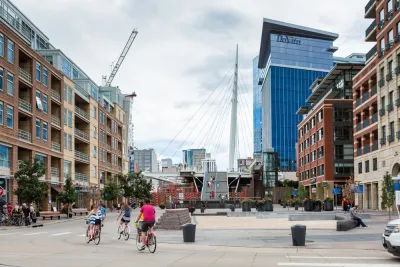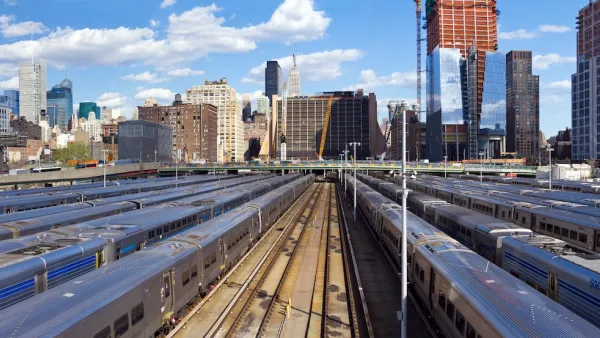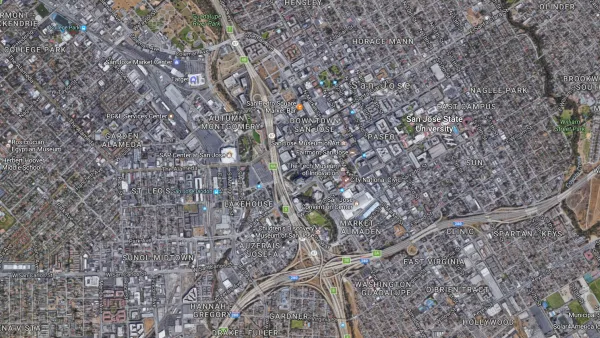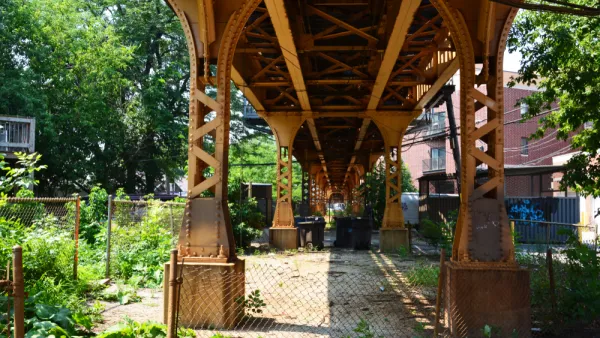Low-income residents are more likely to use transit, and transit needs riders. The relationship seems ripe for mutual benefit.

Eleni Bardaka, an assistant professor at North Carolina State University, and John Hersey, a senior TOD associate of the Regional Transportation District (RTD) in Denver, write a guest post for Transit Center to share survey research exploring the travel habits of people who live near transit.
"Bardaka and Hersey’s work confirms that low-income housing residents use transit a lot more than market-rate residents, reinforcing the case for affordability in transit-oriented developments," according the introductory text supplementing the guest post.
In the words of Bardaka and Hersey:
Transit systems provide users with a ladder to economic opportunity, connecting individuals to home, work, education, healthcare, and myriad metropolitan destinations. This ladder is most critical to low-income, transit-reliant households with little means to afford auto-oriented lifestyles.
The need to state these housing and mobility facts becomes more and more pressing as more and more transit-rich cities become homogeneously affluent cities, according to the article.
Without equitable planning and policies in place, major transit investment can generate new demand for development in areas that quickly transition from economic afterthoughts to high-end enclaves of housing, retail, and offices catering to higher-income earners while leaving behind low-income households who could most benefit from improved transit access. Transit agencies may then find themselves the victims of their own expansion, setting in motion a speculative real estate market that delivers high-rent land uses but few new transit riders.
For a model of equitable planning—rather than the model of gentrifying, ridership depleting transit oriented development—the article looks to Denver's eTOD effort that relies on a variety of private and public sector partners and already has a proof of concept in a development at the 38th and Blake Station on the RTD system.
Hat tip to Angie Schmitt for sharing the article.
Previous Planetizen articles on similar subjects:
FULL STORY: Transit-Oriented Development is More Transit-Oriented When It’s Affordable Housing

Analysis: Cybertruck Fatality Rate Far Exceeds That of Ford Pinto
The Tesla Cybertruck was recalled seven times last year.

National Parks Layoffs Will Cause Communities to Lose Billions
Thousands of essential park workers were laid off this week, just before the busy spring break season.

Retro-silient?: America’s First “Eco-burb,” The Woodlands Turns 50
A master-planned community north of Houston offers lessons on green infrastructure and resilient design, but falls short of its founder’s lofty affordability and walkability goals.

Test News Post 1
This is a summary

Analysis: Cybertruck Fatality Rate Far Exceeds That of Ford Pinto
The Tesla Cybertruck was recalled seven times last year.

Test News Headline 46
Test for the image on the front page.
Urban Design for Planners 1: Software Tools
This six-course series explores essential urban design concepts using open source software and equips planners with the tools they need to participate fully in the urban design process.
Planning for Universal Design
Learn the tools for implementing Universal Design in planning regulations.
EMC Planning Group, Inc.
Planetizen
Planetizen
Mpact (formerly Rail~Volution)
Great Falls Development Authority, Inc.
HUDs Office of Policy Development and Research
NYU Wagner Graduate School of Public Service




























